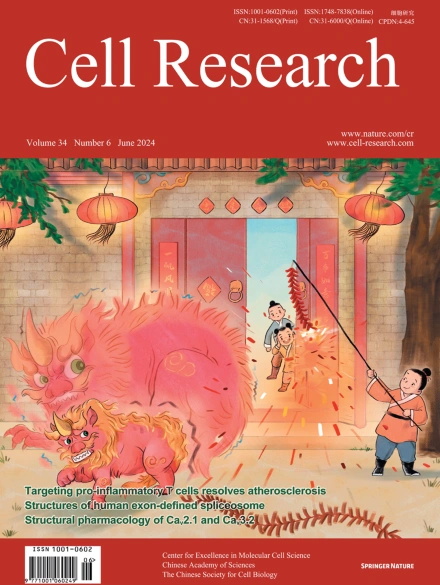
Advanced Search
Submit Manuscript
Advanced Search
Submit Manuscript
Volume 34, No 6, Jun 2024
ISSN: 1001-0602
EISSN: 1748-7838 2018
impact factor 17.848*
(Clarivate Analytics, 2019)
Volume 34 Issue 6, June 2024: 440-450 |
Structural basis for human Cav3.2 inhibition by selective antagonists
Jian Huang1,† , Xiao Fan1,5,†,* , Xueqin Jin2,† , Chen Lyu2 , Qinmeng Guo2 , Tao Liu2 , Jiaofeng Chen2 , Amaël Davakan3 , Philippe Lory3 , Nieng Yan2,4,*
1Department of Molecular Biology, Princeton University, Princeton, NJ, USAThe Cav3.2 subtype of T-type calcium channels has been targeted for developing analgesics and anti-epileptics for its role in pain and epilepsy. Here we present the cryo-EM structures of Cav3.2 alone and in complex with four T-type calcium channel selective antagonists with overall resolutions ranging from 2.8 Å to 3.2 Å. The four compounds display two binding poses. ACT-709478 and TTA-A2 both place their cyclopropylphenyl-containing ends in the central cavity to directly obstruct ion flow, meanwhile extending their polar tails into the IV-I fenestration. TTA-P2 and ML218 project their 3,5-dichlorobenzamide groups into the II-III fenestration and place their hydrophobic tails in the cavity to impede ion permeation. The fenestration-penetrating mode immediately affords an explanation for the state-dependent activities of these antagonists. Structure-guided mutational analysis identifies several key residues that determine the T-type preference of these drugs. The structures also suggest the role of an endogenous lipid in stabilizing drug binding in the central cavity.
https://doi.org/10.1038/s41422-024-00959-8